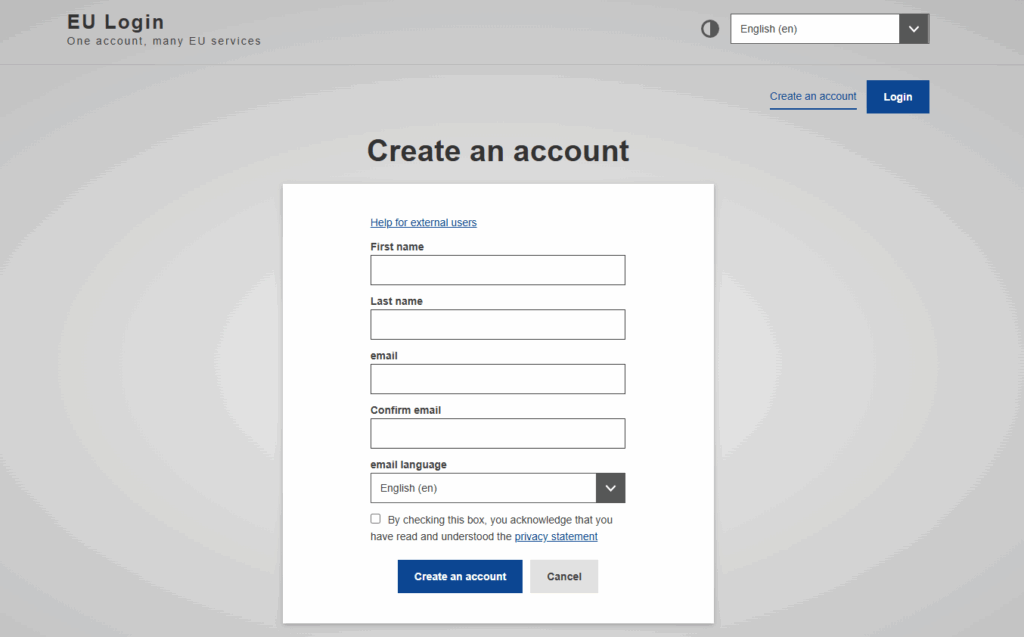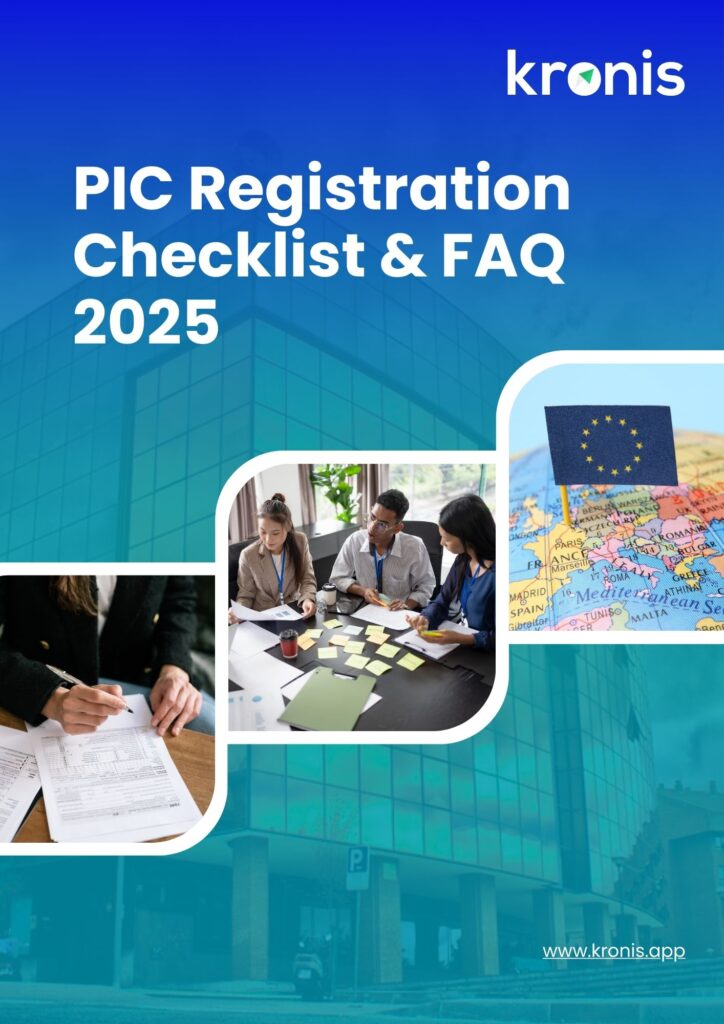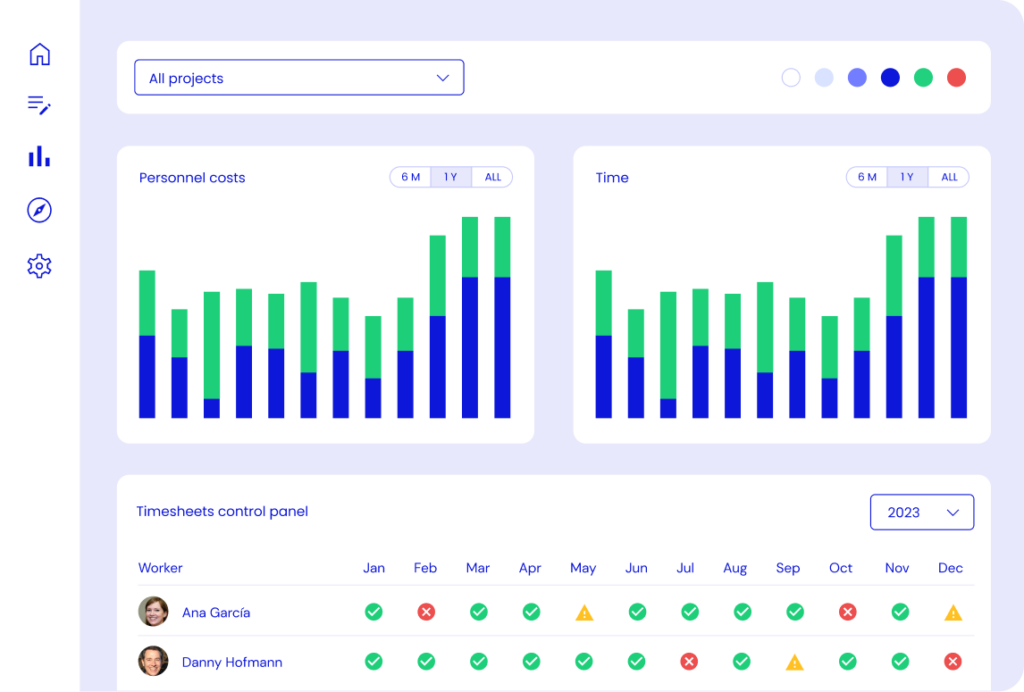Stepping into the world of European funding for the first time? The Participant Identification Code (PIC) is your golden ticket. Here’s how to get it, what to expect, and how Kronis keeps your journey simple once you’ve got it.

Introduction: Start Your EU Funding Journey With Confidence
Planning to join a Horizon Europe project or apply for cascade funding? The very first step is to get your PIC number — the European Commission’s way of identifying organisations in all EU funding programmes.
At Kronis, we know this first step can feel intimidating. That’s why we’ve created this guide to get the PIC Number: to make it human, simple, and stress-free, so you can focus on innovation and impact rather than red tape.
What Is a PIC Number and Why It Matters?
A PIC number is a unique 9-digit code given by the European Commission to identify every organisation involved in EU funding programmes. You need it for:
- Submitting proposals in Horizon Europe and other EU programmes.
- Joining cascade funding or national initiatives.
- Signing EU grant agreements and managing EU-funded projects.
No PIC, no project. With it, you join the European innovation community and avoid having to re-enter your details for each call.
Who Needs a PIC Number?
- Startups and SMEs entering EU funding for the first time.
- Universities and research centres coordinating or joining EU consortia.
- Clusters, NGOs and associations involved in EU-funded initiatives.
In short: if you want EU money for your project, you need a PIC number.
Step-by-Step: How to Get Your PIC Number in 2025
You create your PIC directly in the EU Funding & Tenders Portal. Follow these four simple steps:
Step 1. Go to the EU Funding & Tenders Portal
Create your EU Login
- Go to the EU Funding & Tenders Portal.
- Click Register and create your EU Login account using a professional email address.
- Verify your email, set your password, and log in.
Why this matters: Without an EU Login, you cannot access the Participant Register or any EU funding service.
Check for existing PIC numbers
- Use the Organisation Search tool in the portal.
- If your organisation already has a PIC, contact the existing LEAR (Legal Entity Appointed Representative) for access rather than creating a duplicate.
- If no PIC exists, continue to the next step to start the registration process.
Tip: Duplicates can slow down validation and complicate future grant agreements, so always check first.

Step 2: Prepare your information and register your organisation
Before opening the registration form, gather all the required details to avoid interruptions:
- Legal name (exactly as in official documents)
- Country of establishment
- VAT number (if applicable)
- Business registration number (if applicable)
- Official address and website
- Legal status: public/private, for-profit/non-profit
- Contact details for your organisation
If your organisation does not have legal personality, you must provide proof that authorised representatives can undertake legal obligations on its behalf.
Once ready:
- Go to Participant Register in the Portal.
- Enter your organisation’s name and country.
- If no matches are found, click Continue Registration.
- Complete the form carefully—accuracy avoids validation delays.
Step 3: Manage access rights and appoint a LEAR
When you create the organisation’s record, you automatically become the first Authorised User.
- You can add another authorised user if needed; both can update data and upload documents at this stage.
- Prepare to appoint the Legal Entity Appointed Representative (LEAR). The LEAR will:
- Keep all organisation data in the Portal accurate and up to date.
- Handle official communications with the European Commission.
- Upload required legal and financial documents when requested.
- Manage user access rights for the organisation’s profile.
The EU provides specific templates for the LEAR appointment process—follow them carefully when the time comes.
Check out the Rules for Legal Entity Validation, LEAR Appointment and Financial Capacity Asessment
Step 4: Submit your registration and get your PIC number
- Once the form is complete, review all details carefully before submitting.
- Submit the registration to obtain your provisional PIC number instantly.
- The European Commission may request supporting documents—e.g., statutes, VAT certificates, or registration acts—for full validation.
- After validation, your PIC becomes permanent and can be used for:
- Submitting proposals under Horizon Europe and other programmes.
- Signing Grant Agreements electronically.
- Managing all EU-funded projects linked to your organisation.
What Happens After You Get Your PIC
Getting your PIC number is just the beginning. Once you have it, you’ll use it for:
- Submitting proposals under Horizon Europe, cascade funding, or other EU programmes.
- Signing Grant Agreements electronically through the Funding & Tenders Portal.
- Managing your entire EU project lifecycle: budgets, reporting, audits, document retention.
But with this come obligations:
- Articles 20–25 of the Grant Agreement require accurate financial reporting, document retention for audits, and strict compliance with EU rules.
- Missing deadlines or keeping incomplete records can delay payments or even trigger penalties.
This is where digital tools like Kronis become invaluable.
How Kronis Simplifies EU Projects for you
Startups want to innovate, not drown in EU admin work. Kronis doesn’t create your PIC number — the Portal does — but from the moment you have it, Kronis takes over to:
- Automate deadlines: No more missed reporting dates or audit submissions.
- Centralise documents: Every financial record, timesheet, and report in one secure, searchable place.
- Ensure compliance: Built-in checks aligned with the European Comission to keep you audit-ready at all times.
- Provide real-time visibility: Dashboards and alerts give you full control over your project finances.
With Kronis, EU funding becomes manageable, predictable, and stress-free.
Free PIC Registration Checklist and FAQ (PDF)
Still have questions?
Want the full list of FAQs, common mistakes, and a detailed step-by-step guide to registering your PIC number?
Get our FREE PIC Registration Checklist & FAQ (PDF) — everything you need to register smoothly, avoid common pitfalls, and stay compliant from day one.

Indirect Costs in Horizon Europe: Flat Rates, Real Costs, and How to Stay Compliant

Equipment & Direct Costs in Horizon Europe: How to complete the financial statement



